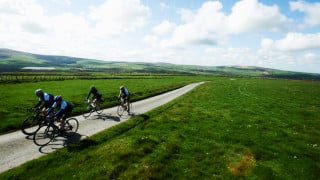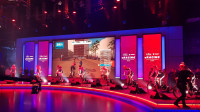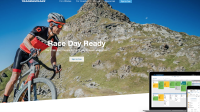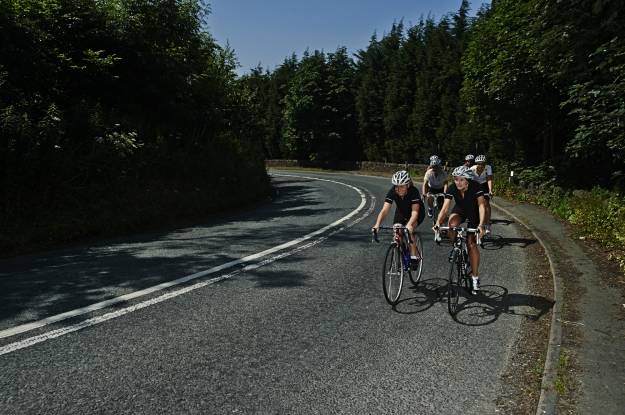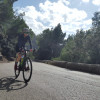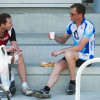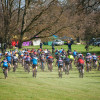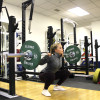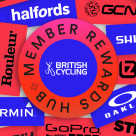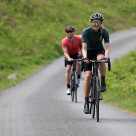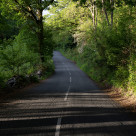Knowledge Level: Beginner
Although it can sometimes be refreshing and liberating just to head out for a ride with no route planned, putting some thought into your route can avoid frustrating delays, improve safety and maximise training gains. With session duration, structure and intensity specified throughout the British Cycling Training Plans, finding the right training routes that allow you to perform the workouts is essential for getting the most out of the plans.
Where can I cycle?
The Highway Code allows you to cycle on all public roads apart from motorways which will be indicated by blue road signs. You may also ride on designated Cycle Tracks and Cycle Lanes. Use of the latter is not compulsory and will depend on your experience, skill and the condition of the lane. Some By-Ways and even Bridleways may also be suitable for road bikes and you’re legally entitled to ride on them. You must not ride on the pavement or designated footpaths.
General guidelines
Although you’re allowed on all roads apart from motorways, there are many roads that should be avoided. This advice particularly applies to hilly or undulating main roads where your speed will be significantly lower than other traffic and you may be obscured by the crests and dips in the road.
Roads with numerous junctions and traffic lights can be frustrating to train on and make holding a consistent pace difficult. If you are riding laps, riding in an anti-clockwise direction, so you are predominately making left turns at junctions, is a good idea.
Try to avoid roads that regularly have cars double parked. Especially in residential areas children or animals can suddenly run out and you can end up with very little room or time to take evasive action. You can easily be forced into the path of oncoming traffic or you can suddenly find a car door opening in front of you.
Although excellent for recreational riding, shared Cycle Tracks are not suitable or safe for faster paced training. Pedestrians will not be expecting fast moving cyclists, and hazards such as dog leads across the track make them potentially dangerous for you and other users.
Different routes for different sessions
If you look through the British Cycling Training Plans, a variety of sessions, including hill reps, flat efforts and long rides, are all scheduled. To complete these sessions successfully you will need to ensure that your route includes suitable roads for the efforts required. For example, if you are planning on doing your Threshold Test on the road, you will need a route uninterrupted by junctions or traffic lights that allows you to ride consistently hard for at least 30 minutes. Hill sessions, as well as requiring hills, will also need some flat riding to warm-up and cool down on. For shorter rides or more intense efforts within a ride, you might want to find an easy to repeat loop that you know suits the requirements of the session.
Consider the weather and terrain
All routes are not created equally. Fifty miles of flat riding will take a lot less time than the same distance in the hills. It can be hard if you are fairly new to cycling to judge how long a route will take so consider shorter repeated loops or simple out and back rides until you get an idea of the pace you are able to ride at.
Along with hills, road surfaces can also significantly affect your speed. Another massive variable is the weather, especially the wind. Be aware of this, especially if you are planning an out and back ride, as you can easily find yourself flying out with a tailwind and then taking more than double the time to struggle back into a headwind.
Check the weather forecast before heading out on any ride and adjust your route according to the conditions. Avoid high and exposed routes if strong winds are forecasted and, if there is a cold snap, smaller untreated roads will be more susceptible to icy patches.
Mix it up
Although it is important to be able to replicate sessions for testing and to gauge your progress, riding the same roads repeatedly will quickly become boring. This can easily cause you to lose motivation and to start skipping rides. Whenever possible, try to explore new roads and even occasionally consider loading your bike in your car or even better jumping on a train and heading to a completely different area for a refreshing change of scenery.
Using technology
GPS and digital mapping technology means that planning, sharing and navigating routes has never been easier. This is especially useful if you are riding in a new area as you can just find a route, download it onto your GPS device and ride away.
Technology might be brilliant but batteries do run out and units occasionally fail. If you are blindly following a GPS and this happens, you can easily find yourself very lost. A back up map of the area you are riding should be part of your essential ride kit and keep an eye out for village and town names so that you can easily locate yourself. A map will also allow you to re-plan or adjust your route if you find you need to cut your ride short or even extend it.
Join a club
Joining your local cycling club and heading out for some club runs is the easiest and most social way to find the best roads to ride on. If you are in an unfamiliar area and want to cycle, using the British Cycling Club finder to contact a local club and ask if you can join them for a ride will save you a lot of time looking over maps. Most clubs will be more than happy to have you tag along and show you the roads.
Off-road exploration
The British Cycling Training Plans do give you scope to ride off-road. You can use a mountain or cross bike to explore local By-Ways, green lanes and tracks that you have always been unsure of heading down on your road bike. You might find some real hidden gems that you can then include in your road training routes.
Think about your target event
Find out as much as you can about the terrain of your main target event and, especially as you get nearer to it, try to replicate it on your training routes. Have you got any local climbs that are similar in length and gradient to the hills you will be tackling? If so, practicing pacing and gear selection on them will prove invaluable. Are there technical descents and could you do with practicing your downhill and cornering techniques? Will there be any unusual road surfaces, such as cobbles, and can you find anything similar locally to practice on?





